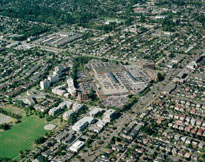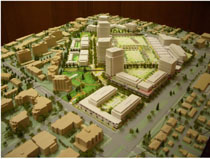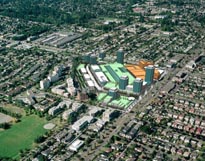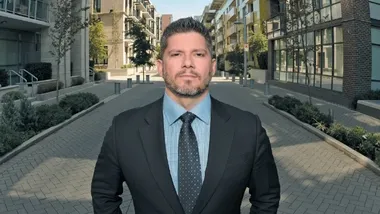One of Vancouver's most recent significant planning exercises is noteworthy not simply because of the merits of its process or its resulting planning and design vision, but perhaps more so because of the new model it may represent to North American mall owners. But I'll come back to that.
One of Vancouver's most recent significant planning exercises is noteworthy not simply because of the merits of its process or its resulting planning and design vision, but perhaps more so because of the new model it may represent to North American mall owners.
But I'll come back to that.
First, some background. Originally developed in 1956, Oakridge Centre was the first auto-oriented shopping centre in Vancouver, situated on a 28-acre site along two major arterials (Cambie Street and 41st Avenue) midway between the airport and downtown Vancouver. As Vancouver urbanized over the years, the centre has remained a piece of suburban thinking with great urban potential.

To realize that potential, the Oakridge Centre Policy Statement was approved by Vancouver City Council in March 2007 after several years of intensive and creative work. It truly does represent, we think, a collaborative effort between City staff, the mall owner Ivanhoe Cambridge, and the largely residential community surrounding the shopping centre. The Policy Statement will guide the future transformation of Oakridge Centre to a new and vibrant, high density mixed use residential, employment, and transit hub. The approach is complemented by and supports the arrival of a new rapid transit station on site, part of the new Canada Line subway connecting Vancouver International Airport to the downtown waterfront in time for the 2010 Winter Olympics.


This is a precedent-setting policy framework that facilitates the retrofitting and redevelopment of a suburban mall into a vibrant, sustainable, innovative urban centre. It's a model in many ways. The Planning institute of British Columbia (PIBC) agreed, naming it this years recipient of their annual Provincial Award of Excellence. Attached here are links to the various policy reports for the initiative.
So at this point you're thinking, "is this really new?" We've seen good examples of re-urbanized failed malls - there's even been a whole buzz-phrase created around the trend, "from greyfields to goldfields". Maybe this is a great example, but what's so new about it?
What's new, at least here in Canada (and I would welcome hearing about examples elsewhere), is that Oakridge is not a failed mall that is being re-urbanized. It's an extremely successful mall that is being re-urbanized. In fact, on a sales-per-square foot basis, it's the second most successful mall in western Canada. And for those of you who've tried to convince a mall owner in your city to "fix something that they think ain't broken", that's a big difference.
What Oakridge represents is a model of a mall owner, city staff and neighbourhood working collaboratively to re-urbanize, in this case using the coming transit as a "spark". A model for cities on how to be respectful of an owners wish to keep their operation going through such a transformation, through careful thought and phasing. And a model for owners that there can be great opportunity in working out such details with a city, transforming and urbanizing your asset, even if your mall is very profitable.
Shopping centres, successful or otherwise, represent a tremendous opportunity for re-urbanization. Let's hope more mall owners pick up on this model.

Planetizen Federal Action Tracker
A weekly monitor of how Trump’s orders and actions are impacting planners and planning in America.

Chicago’s Ghost Rails
Just beneath the surface of the modern city lie the remnants of its expansive early 20th-century streetcar system.

Amtrak Cutting Jobs, Funding to High-Speed Rail
The agency plans to cut 10 percent of its workforce and has confirmed it will not fund new high-speed rail projects.

Ohio Forces Data Centers to Prepay for Power
Utilities are calling on states to hold data center operators responsible for new energy demands to prevent leaving consumers on the hook for their bills.

MARTA CEO Steps Down Amid Citizenship Concerns
MARTA’s board announced Thursday that its chief, who is from Canada, is resigning due to questions about his immigration status.

Silicon Valley ‘Bike Superhighway’ Awarded $14M State Grant
A Caltrans grant brings the 10-mile Central Bikeway project connecting Santa Clara and East San Jose closer to fruition.
Urban Design for Planners 1: Software Tools
This six-course series explores essential urban design concepts using open source software and equips planners with the tools they need to participate fully in the urban design process.
Planning for Universal Design
Learn the tools for implementing Universal Design in planning regulations.
Caltrans
City of Fort Worth
Mpact (founded as Rail~Volution)
City of Camden Redevelopment Agency
City of Astoria
City of Portland
City of Laramie



























